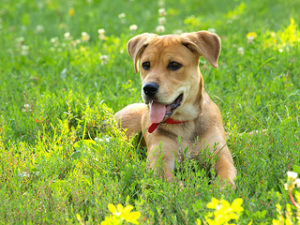Just like humans, dogs and cats are susceptible to a wide range of diseases and disorders. One of the most common ailments in older dogs and cats is arthritis. A reported one in five adult dogs suffer from chronic arthritis, while cats older than 14 have an 82 percent chance of having arthritis
Just because your favorite furry friend is suffering from joint aches doesn’t mean he can’t still enjoy a fun, fulfilling life. Let’s look at some ways you can relieve your pet’s joint pains.
Physical Therapy
Many pet owners turn to surgical procedures in hopes of easing their pets’ pains, but invasive surgeries often come at a high cost and lead to a great deal of downtime as your pet heals. Fortunately, there are treatments that can comfort your pup’s aches without a scalpel:
-
Low-level laser therapy – Also known as cold laser therapy, this therapy uses low-intensity lasers to relieve joint pains and speed up wound healing. The laser, which is really a concentrated form of light, penetrates your dog or cat’s skin, reaching the achey joints. Cells absorb the light and turn it into usable energy that can go toward reducing pain and inflammation. The therapy has been applied to animals of all shapes, sizes, and species, from guinea pigs to horses.
- Massage – Massage is easy to learn and offers a pleasant experience for you and your pet. Through regular massage, you can slow down joint degeneration, reduce tension in the muscles, and stimulate circulation.
1. Start by warming up your dog’s body with long, gentle strokes from head to tail.
2. “Walk” your fingers down the spine and massage in small circles on both sides of the spine.
3. Knead lightly over tighter muscle groups. Your dog will particularly enjoy kneading around the neck and shoulders.
4. Massage the paws with gentle squeezing. Pull the toes slowly. Some dogs have more sensitive feet than others, so don’t force it if your pup isn’t fond of his paws being touched.
5. Move your way from the feet, up the legs, to the hip and buttocks using long, gentle strokes.
6. Avoid working directly on arthritic joints, instead massaging the muscles around the affected areas. Lightly stretch your pet’s limbs to help their flexibility and mobility.
7. End the massage by rubbing the ears, inside and out.
Exercise
Regular exercise is actually good for arthritis. The less your pet moves, the stiffer his joints get. Sedentary animals are also more likely to be overweight, which can add extra stress on the joints and cause more pain.
Some tips to keep in mind when working out with your pets:
- Warm up a minute or two with a gentle walk to reduce cramps and sprains and to prevent injuries.
- If your pet needs some encouragement to move his joints, try positive incentives—a healthy treat and plenty of affection.
- Watch for any signs of overexertion, which can include panting, abnormal gait, or signs of pain. Stop and let your pet rest.
- Just as important as warming up, cooling down allows your pet to relax and gradually reduce his resting heart rate. Cool down periods also allow for the removal of lactic acid from the muscles. This is a good time to give your pet a massage.
- Avoid any exercises that require your dog or cat to leap, jump, or make sudden, quick turns.
As long as you take it easy, you can generally take your pet on any type of exercise. Some exercises to start with:
- Walking – Just make sure you avoid hills and rough surfaces.
- Hiking – Aim for short hikes on smooth trails.
- Games – Ten minute intervals of fetch, hide-and-seek, or Frisbee tossing offer plenty of fun and exercise.
- Swimming – This is one of the best exercise as the water supports your pet’s weight and prevents sudden movements.
Diet and Nutrition
Your pets need a diet consisting of high-quality foods without artificial preservatives, artificial colors, and other harmful additives. 
The main thing to avoid is carbohydrates. Specifically avoid grains and vegetables in the nightshade family. Grains can cause fluctuations in your pet’s blood sugar levels, which can lead to swelling. Nightshade veggies, which include tomatoes, egg plant, and potatoes, contribute to inflammation.
Some nutrients that you should definitely include in your pet’s diet:
- Glucosamine and chondroitin are used by the body to make cartilage, repair damage, and keep the joints lubricated.
- Vitamin C is best known for helping the immune system but it supports the creation of collagen, the protein that forms the structures in cartilage and ligaments.
- Vitamin D allows for the metabolism and absorption of calcium, contributing to the rebuilding of cartilage and joint tissues. Dogs with thicker coats or a lack of adequate sun may suffer from vitamin D deficiency. Sardines packed in water offer an excellent source of the vitamin.
- Omega 3 fatty acids combat the inflammatory effects of omega 6 fatty acids. The best source of omega 3 fatty acids is wild salmon oil.
Before you change or supplement any part of your pet’s diet, talk to your vet.
Life Around the House
Along with some lifestyle changes, you can take several easy steps to turn your pet’s home into a comfortable, inviting environment.
- Elevate water and of food bowls. Bending down to eat or drink causes extra strain to your pet’s neck and shoulders.
- Invest in an orthopedic bed. It should be large enough to give your pet room to stretch, roll, and get comfy. Avoid any beds that could make it hard for your pet to get in or out.
- Beware slick floors. Weak muscles and diminished flexibility can make marble, hardwood, laminates, and other slick floor coverings seem like fresh ice to your pets. Lay rugs, carpet, bath mats, or even yoga mats in areas that your pets frequent. Take special care with slick stairs.
Arthritis can be a big pain, but with love and care, your pet can enjoy all that life has to offer. If your pet could use an extra helping hand with his arthritis, consult your veterinarian.
